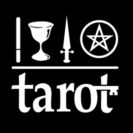What has Gall’s Law to do with tarot? Tarot readers love complexity; tarot is a rich medium full of imagery, arcane concepts, mysticism, magic and philosophies in a smorgasbord of chicken soup. So what is Gall’s law to do with it? Is there any problem with that? You bet. We have lost the wood for the trees. In my view tarot needs to be de-constructed to its simplest forms. Then we rediscover a purity of order and structure that is mathematically based. If we do not, we cannot find new insights and uses for this already brilliant and powerful system.
A complex system that works is invariably found to have evolved from a simple system that worked. The inverse proposition also appears to be true: A complex system designed from scratch never works and cannot be made to work. You have to start over, beginning with a working simple system.
John Gall
John Gall brilliantly summarises the nature of the beast. Tarot is way too complex – it has lost its simplicity. The complexity of tarot means that we can never know when we have made a mistake in interpretation, or what that mistake might be. The extension of Gall’s Law goes into extreme programming, where systems are kept as simple as possible and then greater complexity is added at a later stage. In tarot terms, complexity is summarised as the divinatory meanings, which are to some extent arbitrary interpretations based upon different systems. Extreme tarot requires that the divinatory meanings are stripped out before real deconstruction can take place.
Mathematics is a pure discipline that does not require dogma or belief, and it is surprisingly easy to take tarot into this arena. My vision is of tarot techniques that rival the sophisticated techniques found in game theory, statistics, and probability. We use this to determine outcomes in areas such as business and commerce to produce new models of reality.
